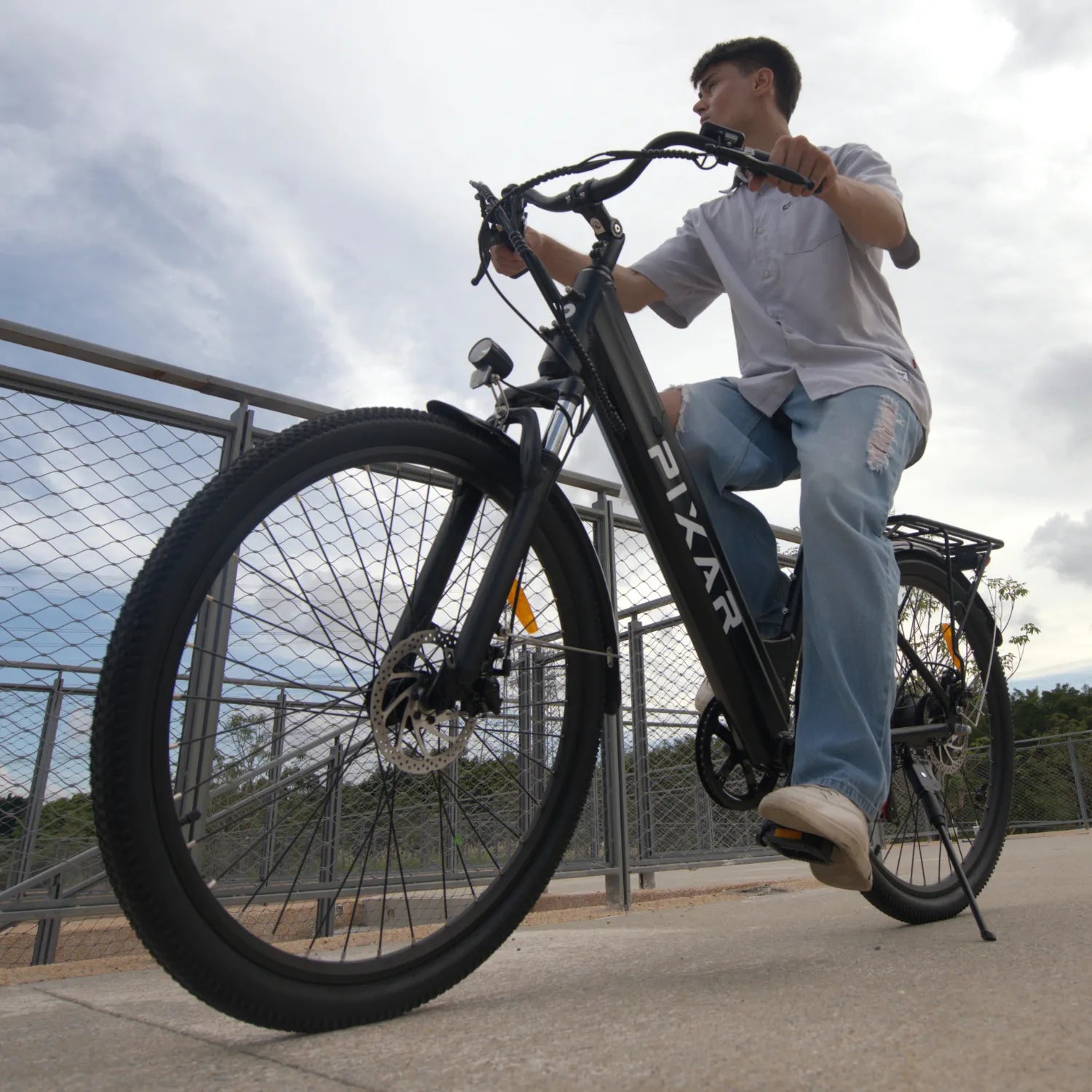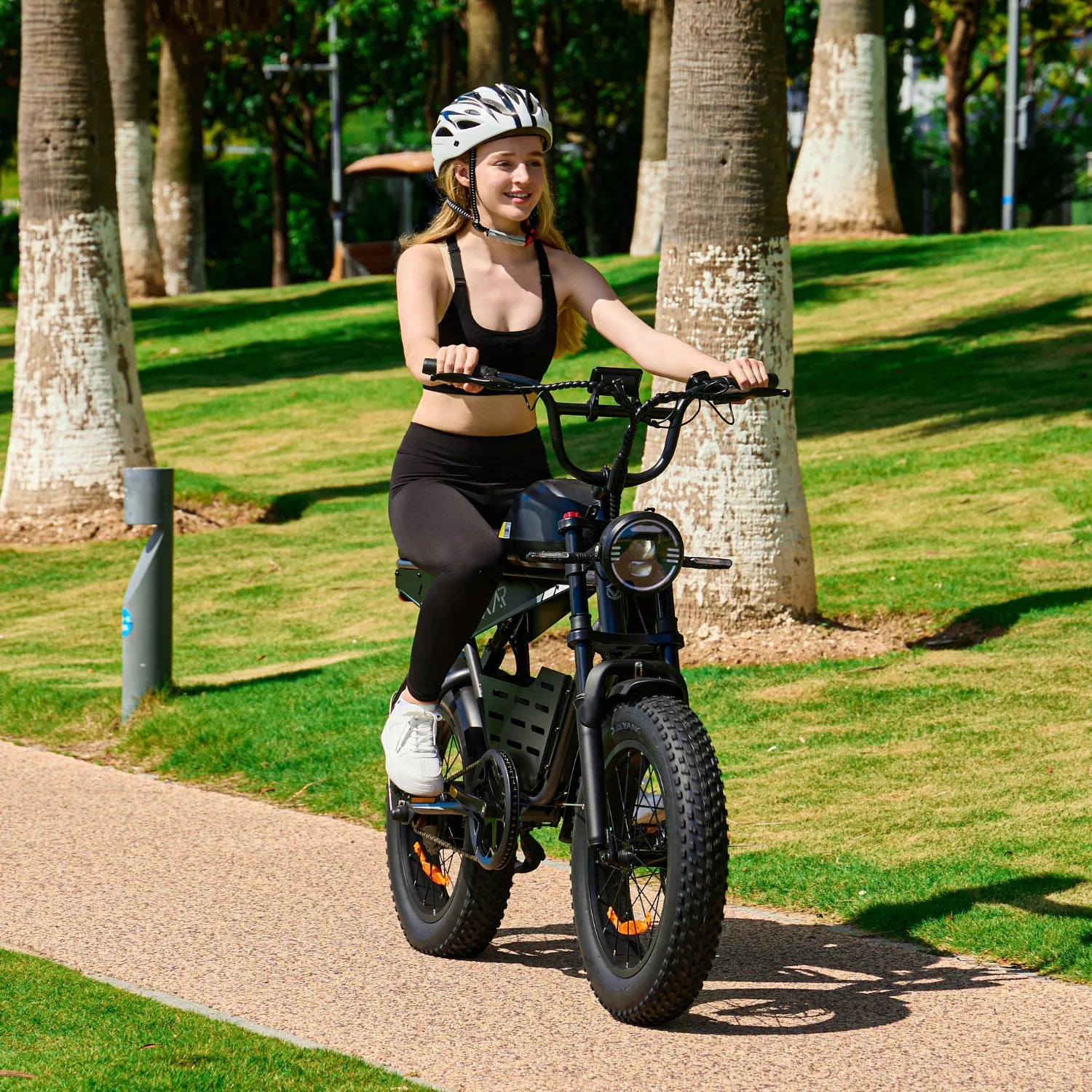If your e-bike’s front fork feels stiffer and less responsive than before, you’re not imagining it—whether you’re commuting downtown or hitting trails, this is a common, fixable issue for many riders. This guide breaks down what causes front suspension stiffness and shares simple steps to restore that smooth, comfortable ride.
What Are Bike Forks?
E-bike front forks rely on spring, air, or hydraulic (oil-based) systems to absorb shocks. These setups work together to soften jolts that would otherwise jostle your hands and arms; when working well, they compress to cushion impacts (e.g., potholes, curbs) and rebound evenly.
Compared to traditional bikes, e-bikes pack more power and handle heavier loads—so their front suspension bears more dynamic force during rides. That’s why a well-designed suspension system is non-negotiable for a smooth, stable experience.
Signs Your E-Bike’s Front Fork Is Too Stiff
How can you tell your front fork isn’t performing as it should? Watch for these clear warning signs:
- Harsh bump feedback: Every crack, dip, or small pebble on the road feels sharp and unfiltered.
- Little compression: The fork barely moves when you lean on it or ride over minor obstacles.
- Stiff/sticky movement: The fork doesn’t glide smoothly—it may “catch” mid-motion or feel stuck.
- No preload sag: When you sit on the bike, the fork fails to compress slightly under your weight (as it’s designed to).
If you spot even one of these red flags, your fork needs attention to avoid worsening wear.
Why E-Bike Suspension Forks Stiffen Over Time
A front fork loses its responsiveness due to several common factors:
- Lack of lubrication: Internal seals dry out, or friction builds up between the stanchions (upper fork legs) and bushings.
- Dirt/debris: Dust, mud, or grime clogs fork seals, causing “stiction” (stiff, sticky movement) and faster component wear.
- Worn parts: Springs or damping cartridges lose elasticity or break down after months of regular use.
- Over-tightened preload: For adjustable forks, cranking preload too high restricts the fork’s ability to compress.
- Weather damage: Cold temperatures thicken suspension oil (slowing movement), while heat accelerates wear on internal parts.
Regular riding—especially off-road or in rainy/sandy weather—worsens these issues, since rough conditions kick up more debris and strain components.
5 Ways to Fix a Stiff E-Bike Front Fork
Most stiffness problems are reversible with basic care. Here’s how to get your suspension working smoothly again:
- Clean seals and stanchions: Start with a gentle wipe to remove loose grime around fork legs using a damp cloth; use suspension cleaner if you have it for stuck-on dirt. Avoid high-pressure hoses near seals—they can damage the delicate rubber.
- Lubricate internals: Lightly coat the stanchions with suspension oil or silicone lubricant, then compress the fork repeatedly to work the lubricant into internal parts. For deep cleaning, opt for a professional bike shop service.
- Adjust preload: If your fork has a preload dial, turn it slightly to reduce tension—this lets the fork move more freely. This tweak is especially helpful if the fork was set too firm from the factory.
- Check for damage/leaks: Look closely for oil leaks (a sign of seal failure), cracked stanchions, or worn seals. Any of these issues mean a mechanic should assess the fork to prevent further damage.
- Stick to regular maintenance: Like your e-bike’s battery or brakes, forks need consistent care. Service the suspension every 6–12 months, depending on how often you ride and if you frequent rough terrain.
When to Upgrade or Replace Your E-Bike’s Front Fork
If you’ve cleaned, lubricated, and adjusted your suspension but it’s still stiff or unresponsive, the fork is likely worn out—or it wasn’t built for your riding style. Here are key signs to consider an upgrade:
- It uses a basic coil spring with no damping or adjustability (not enough for trails or heavy use).
- You deal with frequent oil leaks, loud creaks, or visible damage (e.g., bent stanchions that can’t be fixed).
- You ride rough terrain often, commute long distances daily, or carry extra weight (like cargo or a passenger).
For upgrades:
- Take photos of your current fork (note the brand and model) and ask your e-bike manufacturer or local shop for compatible options.
- If your frame allows, replace it with a high-quality hydraulic or air-sprung fork—these offer better shock absorption and customizable settings.
- If your current bike’s frame limits fork upgrades, it might be worth considering a new e-bike with a more durable, trail-ready suspension system.
A responsive fork doesn’t just boost comfort—it also improves control and safety, whether you’re navigating city traffic or rocky paths.
Final Thoughts: Don’t Let Stiff Suspension Ruin Your Ride
Your e-bike’s front fork is a key part of how it feels and handles. If it starts to stiffen, don’t ignore the problem—simple checks, regular cleaning, and timely adjustments can keep it working smoothly for years.
Fixing stiffness early not only protects your fork from costly repairs later but also ensures you enjoy comfortable, safe rides year-round, no matter the weather. Don’t let a stiff fork hold you back from making the most of every e-bike trip!















Leave a comment
This site is protected by hCaptcha and the hCaptcha Privacy Policy and Terms of Service apply.